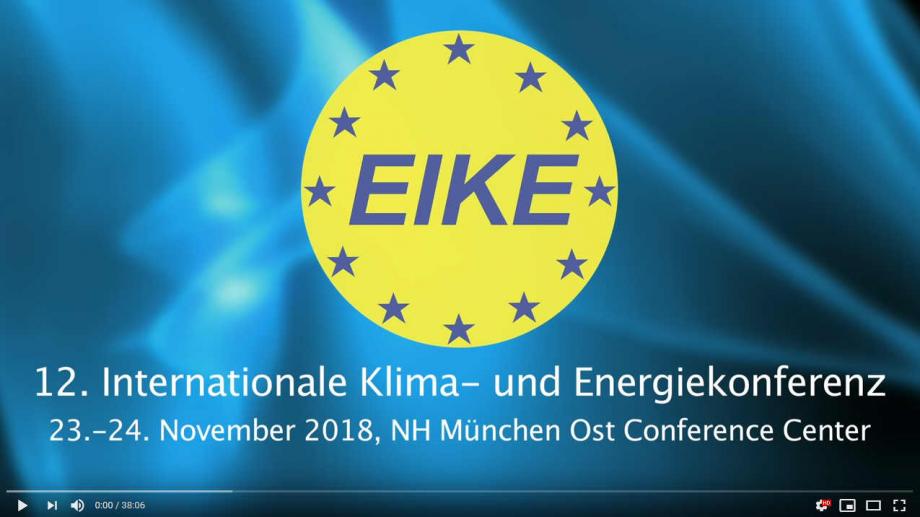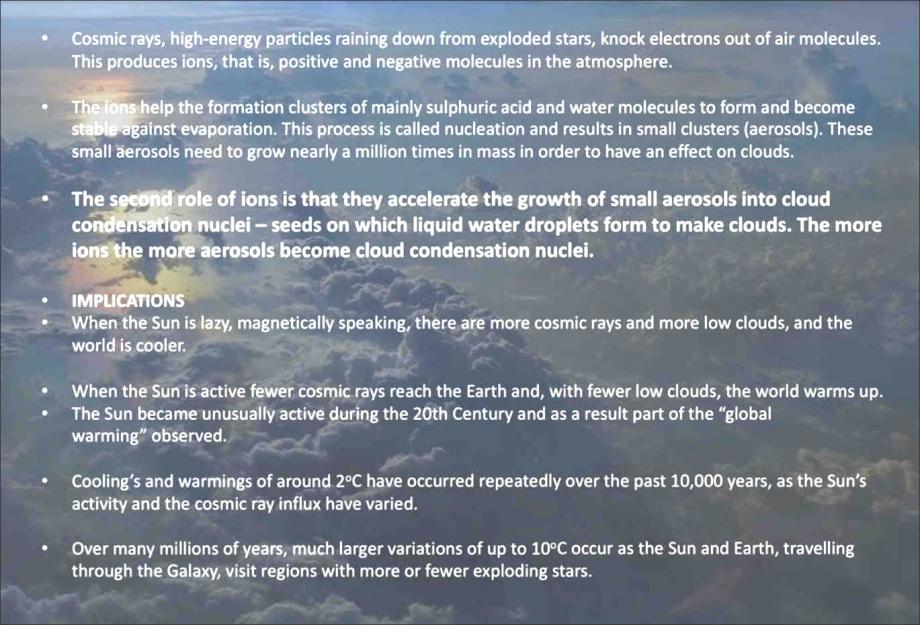The influence of cosmic radiation on the climate - Henrik Svensmark
EIKE - European Climate and Energy Institute
Published on Jan 17, 2019
 12th International EIKE Climate and Energy Conference (IKEK-12) on 23 and 24 November 2018 in Aschheim / Munich. Professor Svensmark, Center for Solar Climate Research at the Danish National Space Center, Denmark's Technical University, is one of the leading physicists in the field of cosmic-ray climate research. This radiation comes not from the Earth's Sun, but from distant stars that ended up as supernova and hurled their products, mostly extremely fast-moving iron atoms, into the cosmos.
12th International EIKE Climate and Energy Conference (IKEK-12) on 23 and 24 November 2018 in Aschheim / Munich. Professor Svensmark, Center for Solar Climate Research at the Danish National Space Center, Denmark's Technical University, is one of the leading physicists in the field of cosmic-ray climate research. This radiation comes not from the Earth's Sun, but from distant stars that ended up as supernova and hurled their products, mostly extremely fast-moving iron atoms, into the cosmos.
These particles, which hit the earth's atmosphere, would be considerably reduced by the solar wind. Increase the solar activity, thus reducing the influence of cosmic radiation on the upper air layers / troposphere. The indicator for this is the radioactive carbon isotope C14, which forms after the impact of cosmic particles on terrestrial air molecules in a cascade. If the C14 comes to the ground after some time, it would be partly built into living things and can be detected today in fossils. Other cascade products such as aluminum Al26 or beryllium Be10 could be found in the polar ice of the Earth's poles, as these particles were aerosolized and served as condensation nuclei for snowflakes or cloud droplets. In fact, cloud formation between 1985 and 2005 clearly correlated with cosmic ray input.
Professor Svensmark described his laboratory experiments in a self-constructed chamber where, between 2004 and 2007, he studied the effect of radiation on cloud formation. In this chamber were climate gases as an atmospheric model and lamps that represented the solar sun. The experiment formed ions that formed aerosols of about 1-3 nanometers in size. In later follow-up attempts, Svensmark was able to produce aerosols over 50 nanometers in size, which would be necessary for the formation of condensation nuclei.
Conclusion: A high cosmic radiation input thus indicates cold phases of the climate. The ions generated in the upper layers of air by cosmic radiation cascades are able to cause the formation of nuclei for cloud formation (and snowflakes). The corresponding data on cosmic radiation are consistent with the solar cycles and climate evolution in the Holocene (geological age since 10,000 BC).


